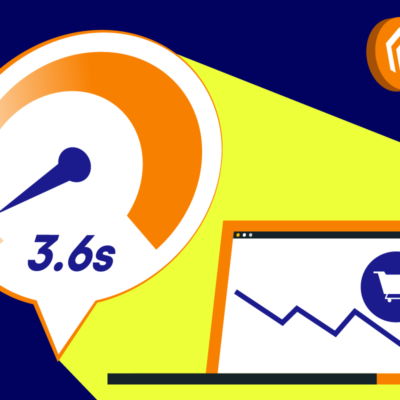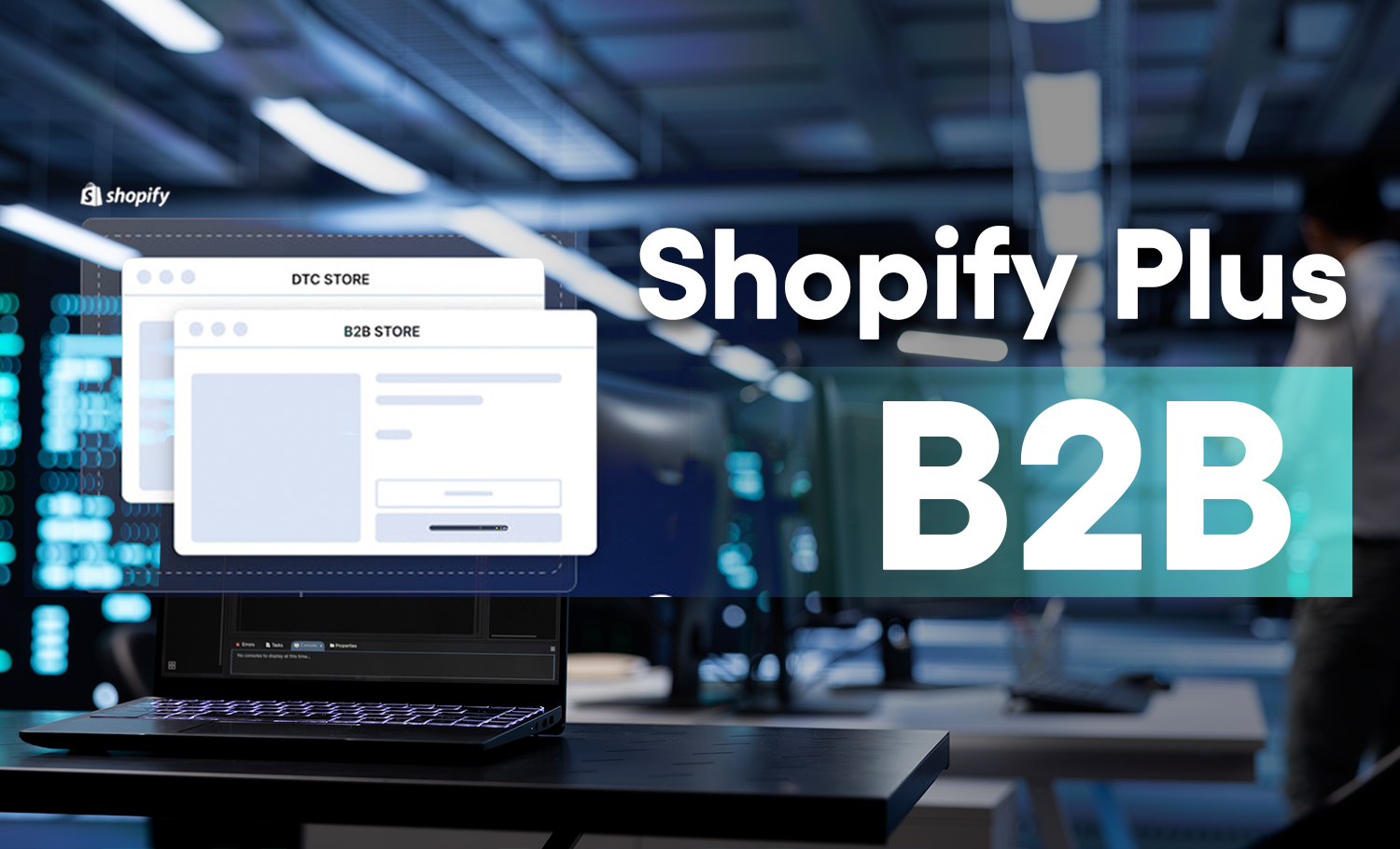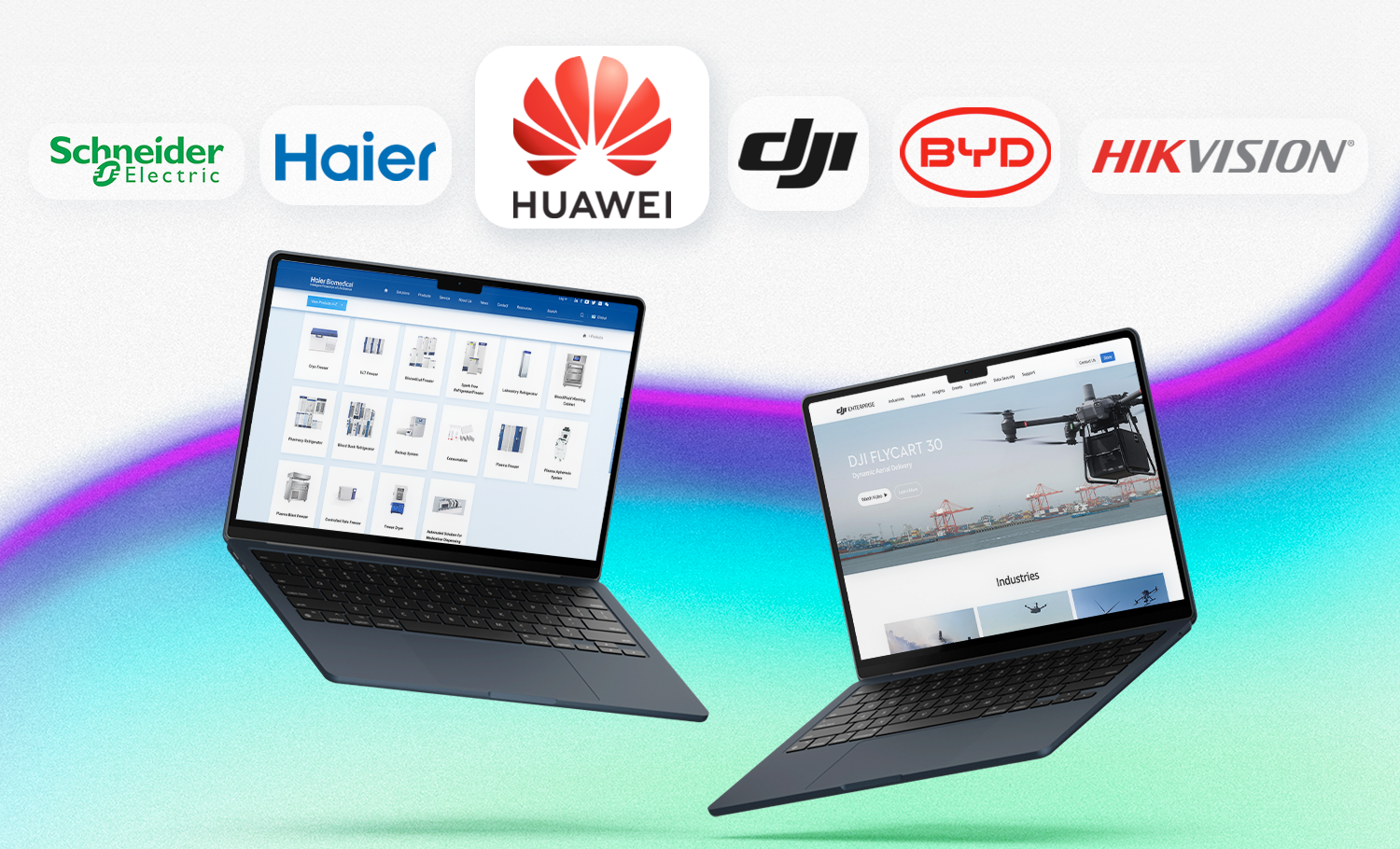In today's digital-first business environment, B2B eCommerce transformation is not just an option—it’s essential. As more industries shift toward digital, B2B companies must rethink how they sell, engage, and serve their clients. The global shift toward digital sales, accelerated by COVID-19, has cemented eCommerce as the future of B2B. According to McKinsey, over 65% of B2B companies now transact fully online.
But how does an offline B2B enterprise go online? What steps do you need to take from traditional business to eCommerce operation? This guide will break down the key phases of a successful B2B digital transformation and offer actionable steps to help your business adapt and thrive.
TMO has vast experience developing Custom B2B eCommerce Solutions for projects in China and overseas.
Phase 1: Building a Digital Product Catalog

Setting up a brand website has obvious benefits, and displaying all of your product options—even without the possibility of finalizing the transaction online—is a fantastic way to kickstart your digital transformation journey through a comprehensive and easy-to-navigate digital product catalog. This will serve as the foundation of your B2B eCommerce presence by showcasing your product offerings and enabling potential customers to browse and learn more about your brand.
For more insights on early-stage B2B eCommerce, read How Digital Catalogs Can Kickstart B2B Lead Generation SuccessWe look into how building a digital catalog can be a smart, cost-effective strategy for B2B companies to start their digital transformation journey and enhance lead generation.how digital catalogs can boost your B2B lead generation.
Actionable Tips for Building Your B2B Catalog:
- Choose the Right Platform: While tools like Magento 2 allow for seamless product management and ERP integration, making it easier to maintain large catalogs, B2B brands starting their eCommerce journey can also opt for other cost-effective alternatives to get started.
- Optimize for Search: Since you are already taking your catalog online, making sure it is discoverable on websites like Google is a great way to build your organic traffic. Ensure that your product catalog is readable by search engines, includes keyword-rich descriptions and clear titles to rank higher in search results.
- Add Detailed Product Information: Include high-quality images, videos, and in-depth specs to help customers make informed decisions.
While at this stage, customers aren't able to buy products from your website, this is still an important step. They can browse the range of products you offer, and learn more about them and your brand. As such, they can develop further interest in your products and so move from this initial step to contacting you and progressing to become a new customer. Likewise, existing customers can use the site and catalog to refer your brand and products to other potential buyers.
Phase 2: Setting Up a User-Friendly Online Storefront

While some might consider it the only step when discussing B2B eCommerce, as we've just covered, product catalogs can actually be a better first approach for some brands compared to directly jumping into online sales. Nonetheless, the ultimate goal of most brands is to offer online sales for their customers given the added convenience this can bring to customers.
However, it would be a mistake to see this step as merely putting your products for sale on a marketplace or your website, and today’s B2B buyers expect the same ease of use from B2B websites as they do from B2C stores. Your online storefront needs to be fast, intuitive, and capable of handling complex orders.
One key point that some overlook is making the most of the customer interaction and transaction. These offer the valuable opportunity to make lasting connections with customers and learn more about them. By connecting to their email or other contact methods, you can make it easier to later encourage repeat purchases from them. And by gathering data about their purchases and site-viewing habits, you can learn more about your customers' wants, needs, and habits.
To learn more about advanced B2B online shopping features to implement in your website, check out our article: Magento: Key Features for B2B eCommerce GrowthAdobe Commerce (Magento) is a powerful eCommerce Solution, check out our overview of the top B2B features for enterprises.Adobe Commerce: Key Features for B2B eCommerce Growth
Key Considerations:
- Mobile Optimization: A significant portion of B2B buyers are using mobile devices to research products and place orders. Ensure your store is fully responsive.
- Personalization: Using data from previous interactions, offer tailored recommendations to your customers, increasing engagement and conversions.
- Streamline Purchasing Processes: Implement features like bulk ordering, quote requests, and flexible payment options to meet the specific needs of B2B buyers.
Phase 3: Leveraging Customer Data to Improve Sales

Customer data is the most valuable asset in a digital transformation. Collecting and analyzing data allows you to tailor your marketing and sales strategies, offer personalized experiences, and improve customer retention. You can gain insights into which products are drawing attention and which may need price adjustments or additional marketing efforts. In this way, you can bring your brand closer to their ideal and expectations, and better appeal to future potential customers with similar wants.
For example, if many of your customers are viewing a particular product without making a purchase, but happily making purchases elsewhere, you can learn by comparison what might be the issue with the particular product. Have you priced this product too high compared to the perceived value, or compared with other products on offer? Do customers not see it as being as useful or functional? With detailed customer and user data, you can make better-educated predictions and react accordingly.
See LeyboldA China-localized web app that integrates into the social media ecosystem helped Atlas Copco-subsidiary Leybold experience substantial growth in mobile users.how TMO helped a world-leading provider of industrial solutions leverage historical data and user behavior insights to create a digital journey for its China mobile website.
Tools to Help You Analyze Customer Data:
- Google Analytics: Provides insights into how users interact with your site, what products they are viewing, and where they drop off in the purchasing funnel.
- Adobe Experience Manager (AEM): Helps collect, manage, and personalize customer interactions across all touchpoints with user journey analytics and data-driven personalization.
- CRM Systems and Automation: Platforms like Salesforce or HubSpot help you organize customer interactions and automate personalized follow-ups with tools like Marketo or Mailchimp.
Phase 4: Offline-Online Integration to Support Sales Operation

While digital is key, many B2B sales still happen offline. Successful digital transformation integrates offline operations with online platforms to provide a seamless experience for customers. For instance, a client may prefer to negotiate contracts in person but finalize orders online, or vice versa.
The flexibility of integrated omni-channel eCommerce makes it a perfect fit for B2B eCommerce. It also makes for a powerful later step along the digital transformation journey. Two powerful ways in which this can help your offline operation are:
- ERP Integration: Synchronize inventory and sales across both online and offline channels to prevent stockouts and ensure customers can view up-to-date inventory.
- Digital Contract Management: Offer systems where customers can start negotiations offline and finalize contracts online, improving flexibility and convenience.
Platforms like Magento 2 offer features designed to enhance B2B operations. We summarized the features from 10 Outstanding B2B Magento / Adobe Commerce SitesWe cover 10 B2B eCommerce websites built on the Adobe Commerce (Magento) framework, from multi-vendor to self-operated platforms.10 Outstanding B2B Adobe Commerce Sites.
Key Benefits for Omnichannel eCommerce:
- Enhanced Customer Experience Through Omnichannel Integration: A well-integrated solution will allow customers to start their journey online and then finalize deals offline (or vice-versa).
- Speeding Up the Sales Cycle: By digitizing parts of the sales process like quoting, product recommendation, and order approvals, businesses can significantly reduce the time it takes to close deals by streamlining administrative tasks.
- Real-Time Data Synchronization: A holistic view allows sales reps to pick up where the online interaction left off, providing a personalized and efficient sales experience.
How TMO can support your B2B Digital Transformation
B2B eCommerce digital transformation is a multi-phase process, requiring thoughtful planning and the right tools. From building a robust product catalog to integrating offline and online channels, each phase is critical for success.
TMO specializes in crafting tailor-made digital experiences for B2B users, as well as developing integrated systems and procurement flows that can support your digital operation. If you'd like to know more about how your B2B brand can benefit from digital transformation or eCommerce integration, don't hesitate to contact our experts at TMO and discuss which online strategy might be the best fit for you.











